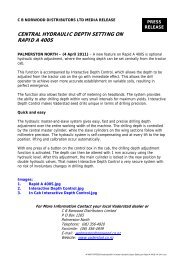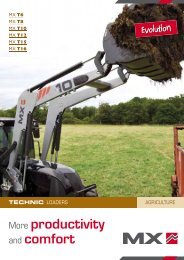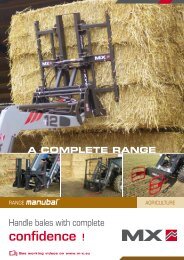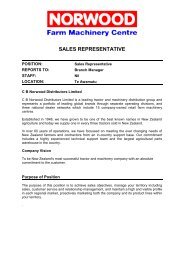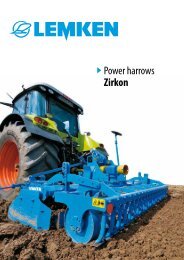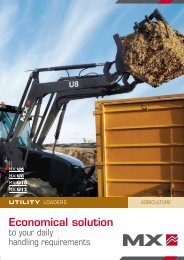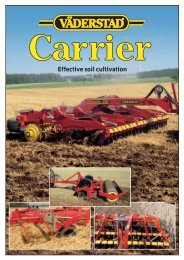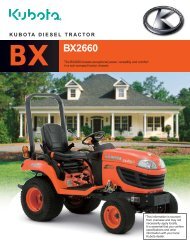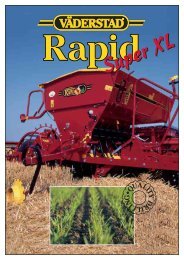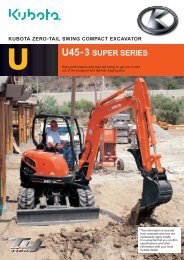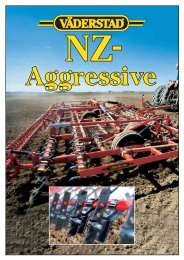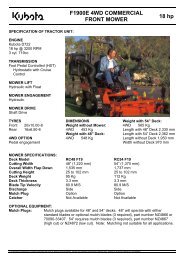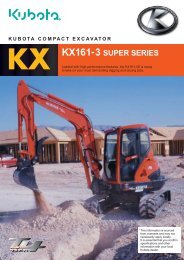Vaderstad TopDown Brochure - LiveUpdater
Vaderstad TopDown Brochure - LiveUpdater
Vaderstad TopDown Brochure - LiveUpdater
You also want an ePaper? Increase the reach of your titles
YUMPU automatically turns print PDFs into web optimized ePapers that Google loves.
Reduced tillage wIn reduced tillage, it is importantto set biological targetsthat should be implementedand achieved. Increasing thehumus concentration in theupper topsoil can be such atarget. It improves the reliabilityof crop emergence since therisk of soil crusting is reduced.Better drainage in the soilprofile can be another target. Itis achieved because earthwormsthrive when the ploughis left idle.Higher humus content at the surfaceAn increase in the humus concentrationin the upper topsoil is one of the greatestadvantages of shallow, reduced tillage.Many farmers who have practised reducedtillage for decades often view that asthe most important aim. Since harvesttrash is not mixed into a deep soil layer,the amount of humus in the uppermostlayer increases, while further down inthe soil profile it decreases. Reduced tillageis a question of redistributing thesame amount of harvest trash over ashallower depth.More reliable emergenceThe risk of crusting decreases as a resultof the humus increase in the surfacelayer. This improves crop establishmentand makes it more reliable, particularlyon weak-structured soils with a low claycontent or on silty soils. If it rains soonafter drilling, the high humus concentrationat the surface comes into effect. Thestraw cylinders embedded in the transition,between the soil surface and the air,that have not yet decomposed also havethe effect of creating aeration channelsaround them.



